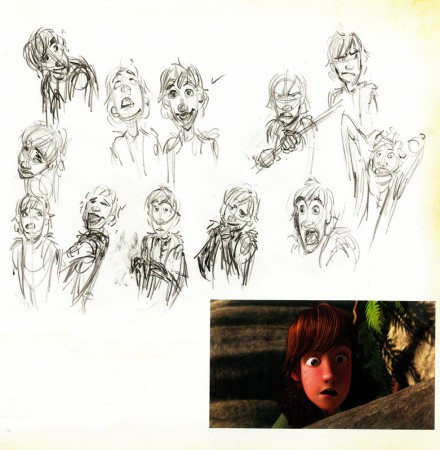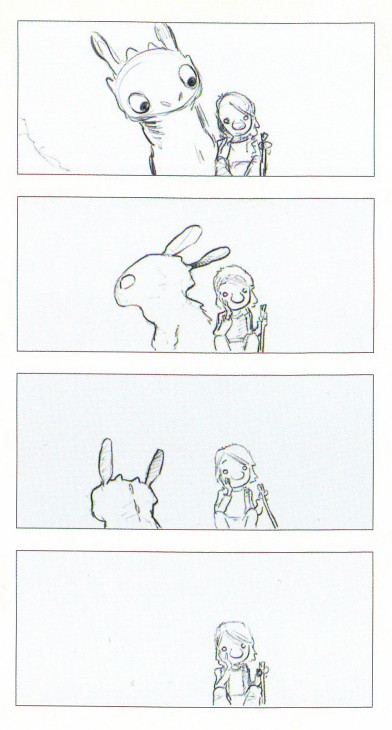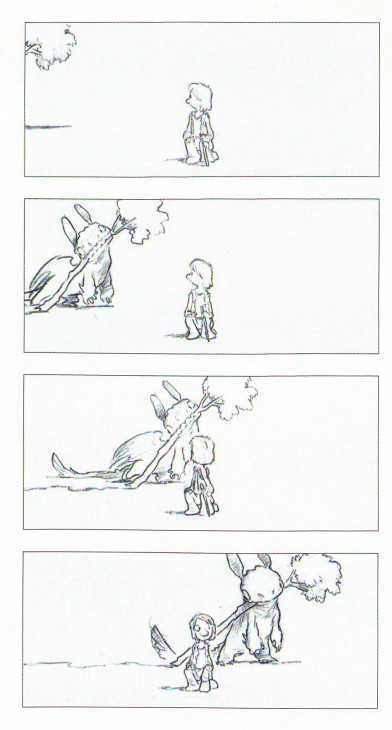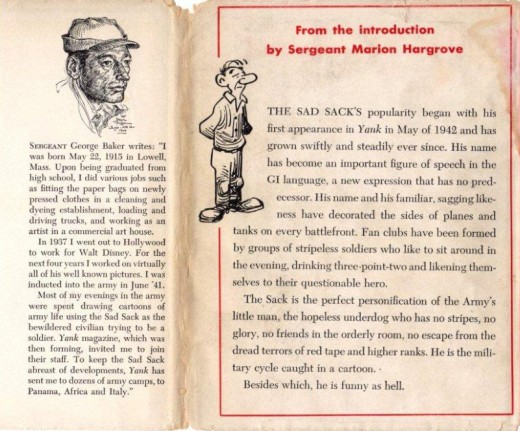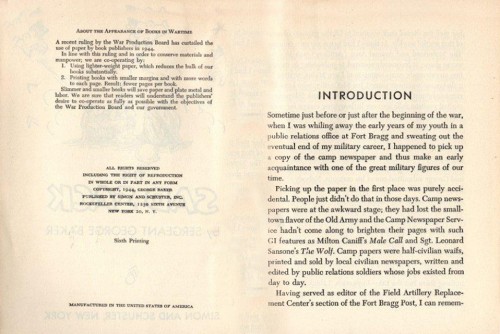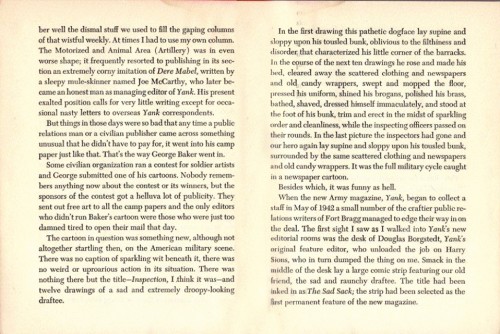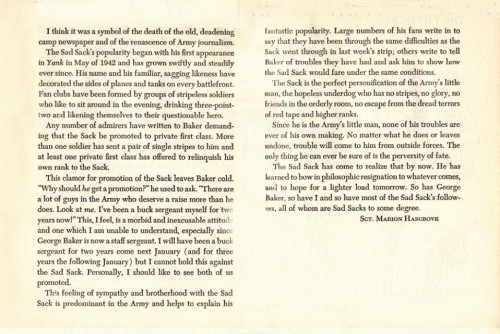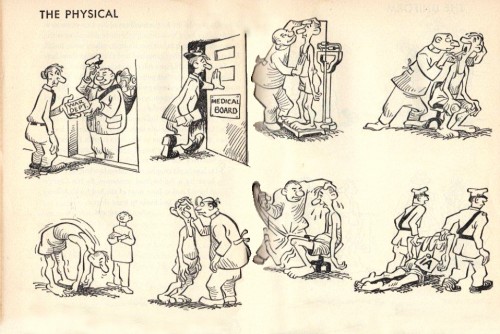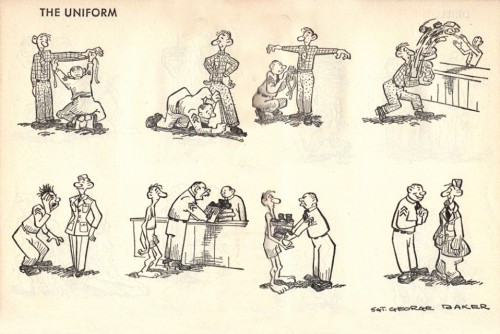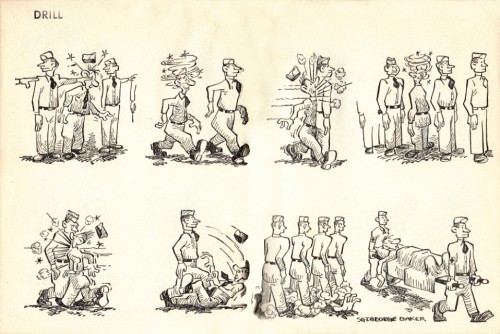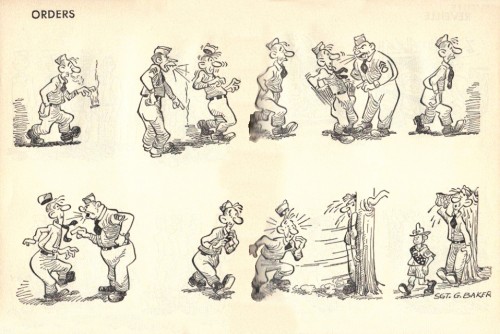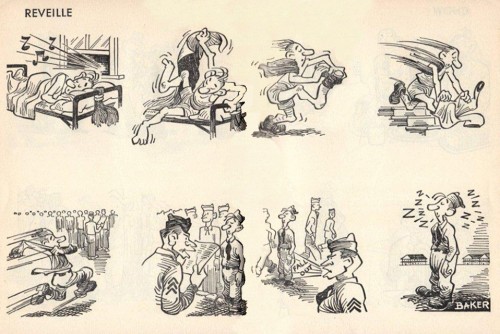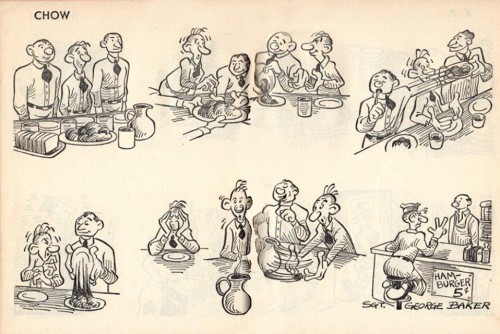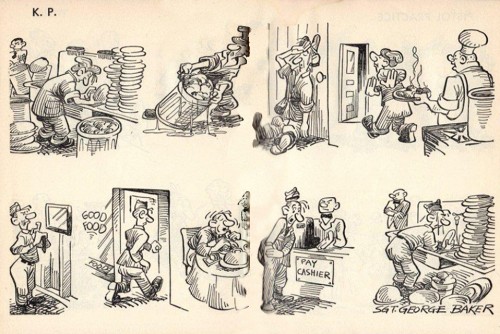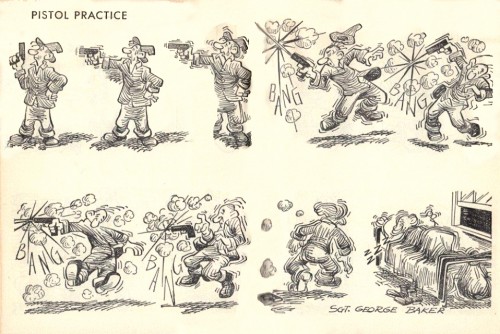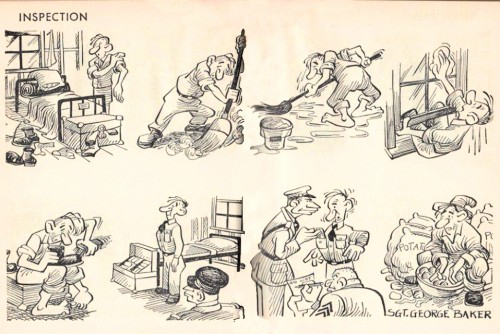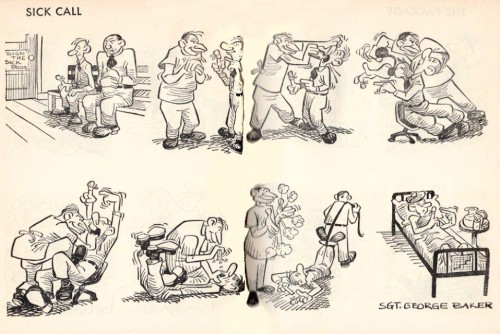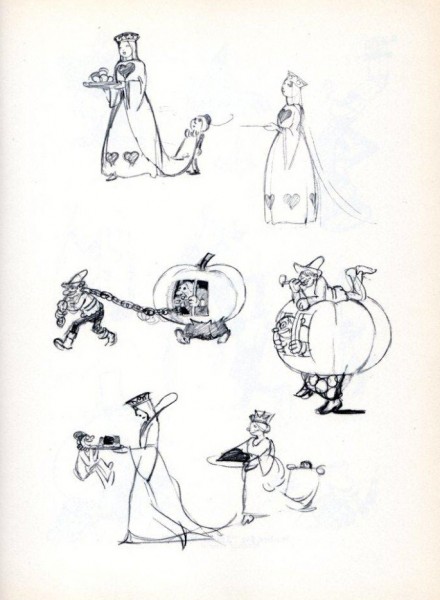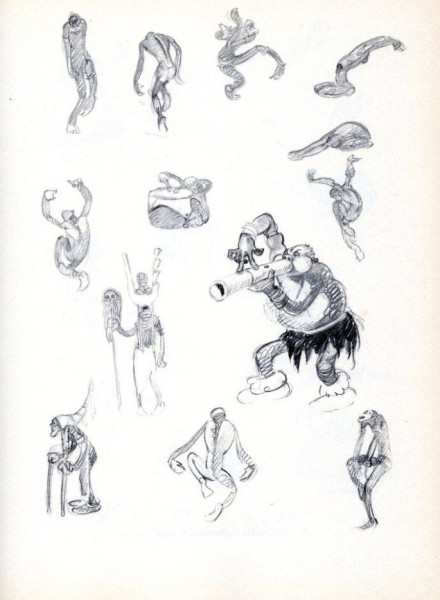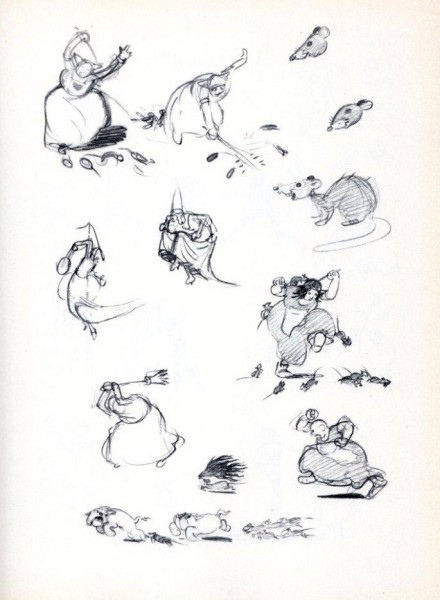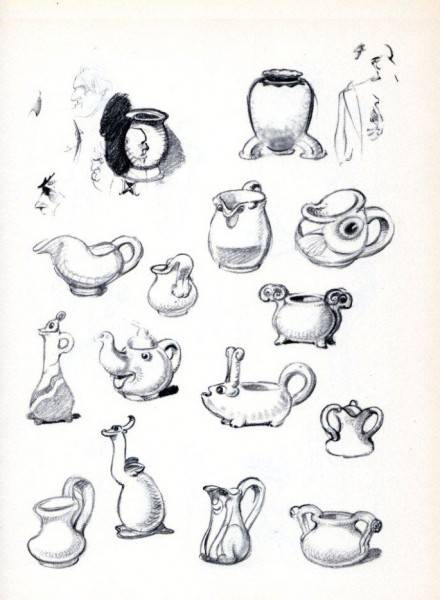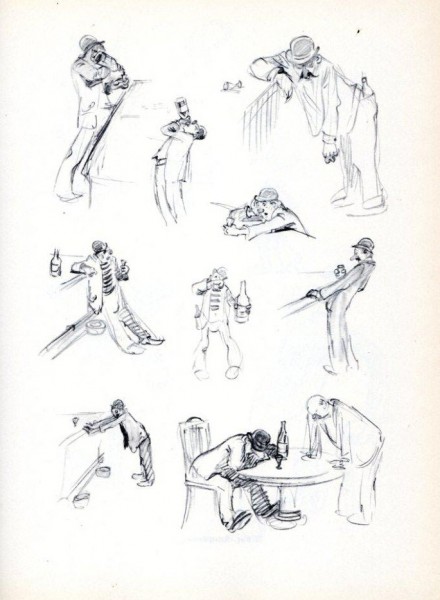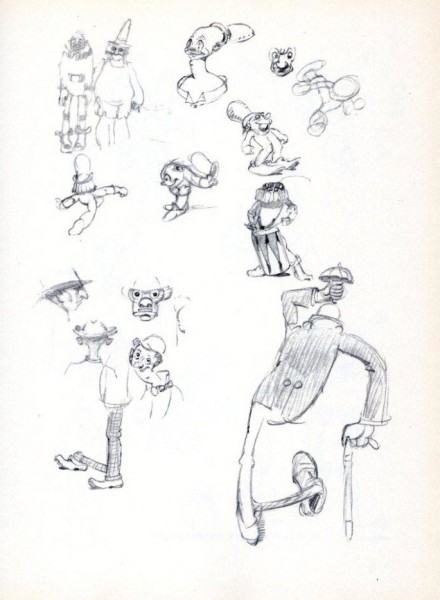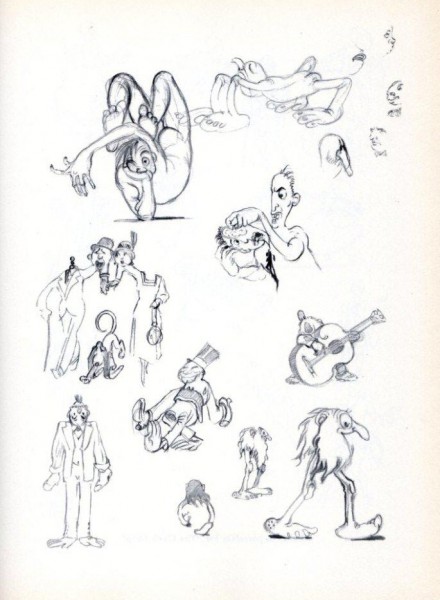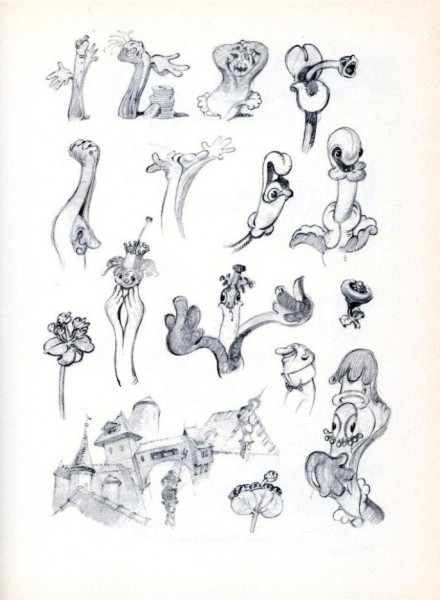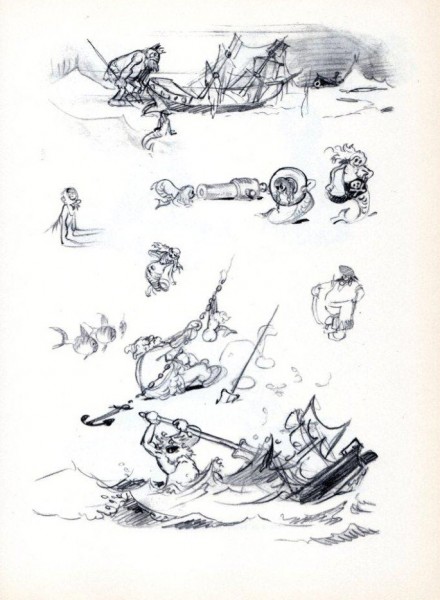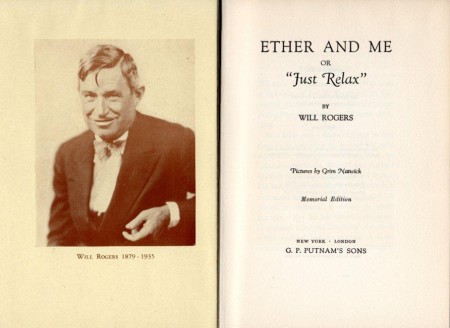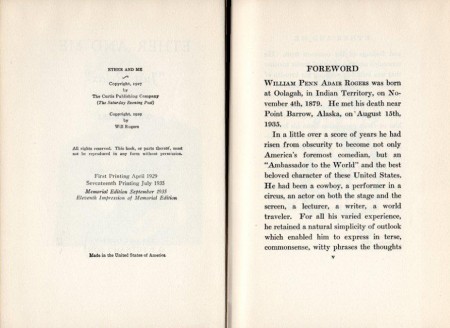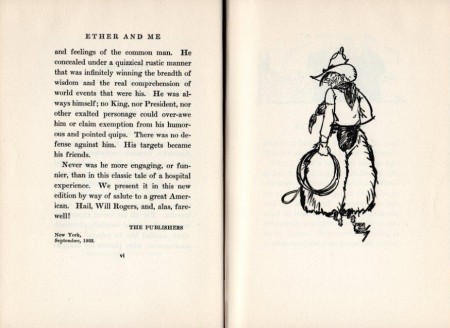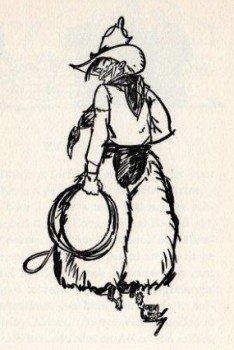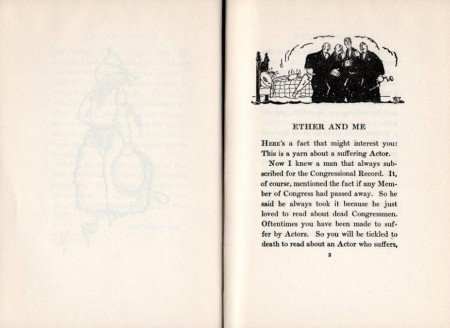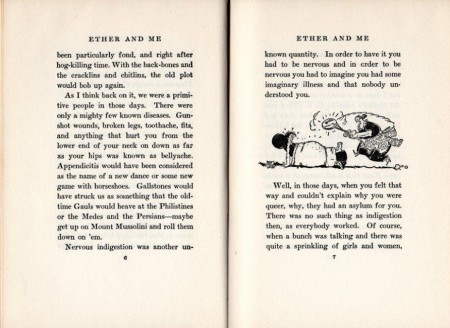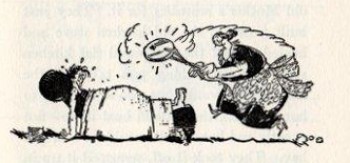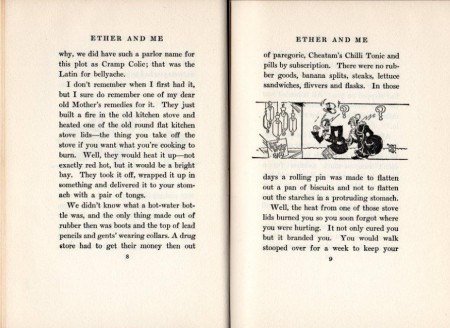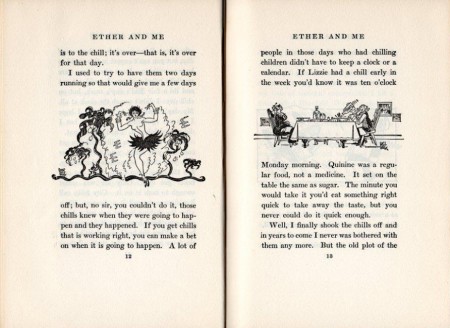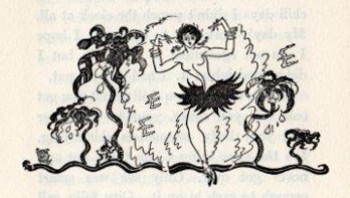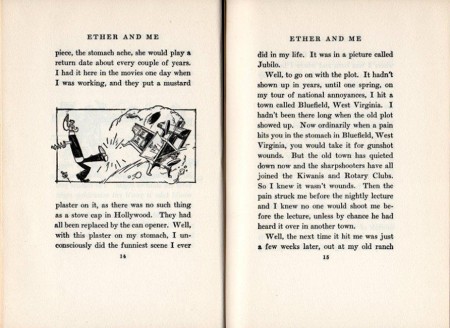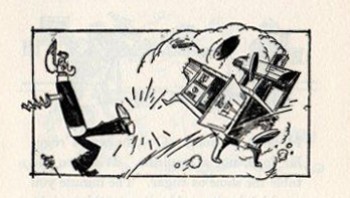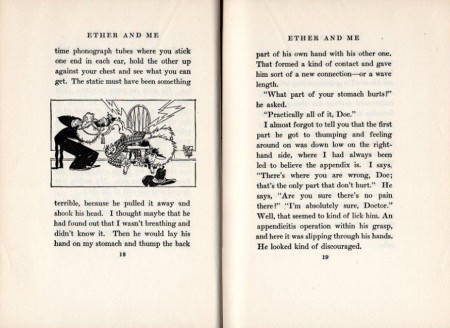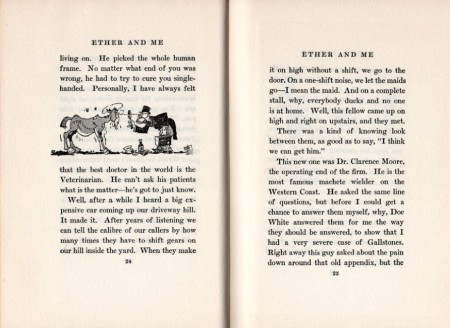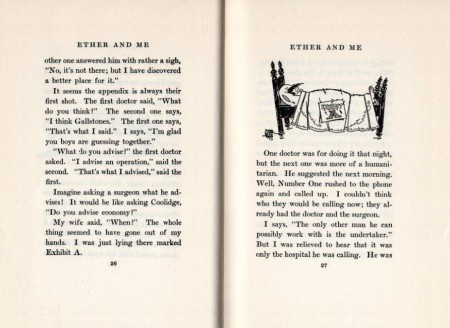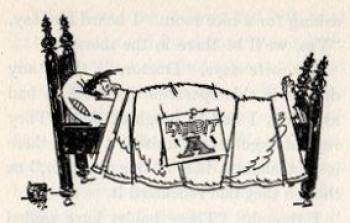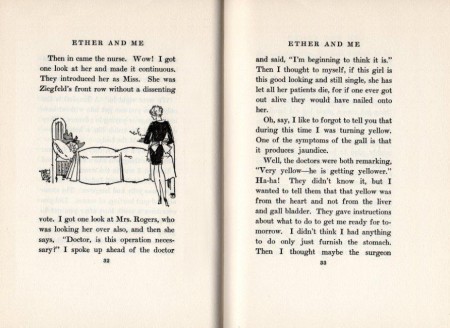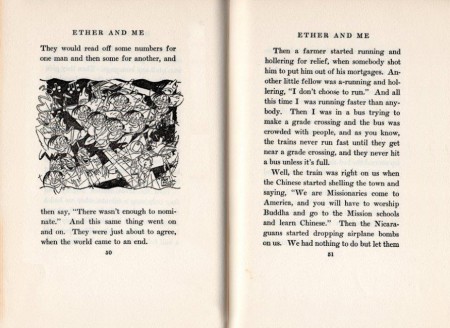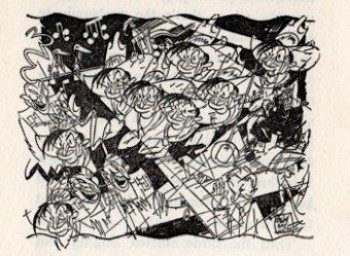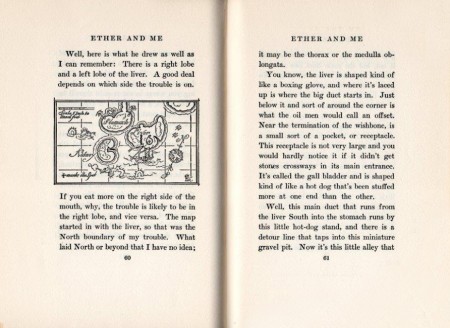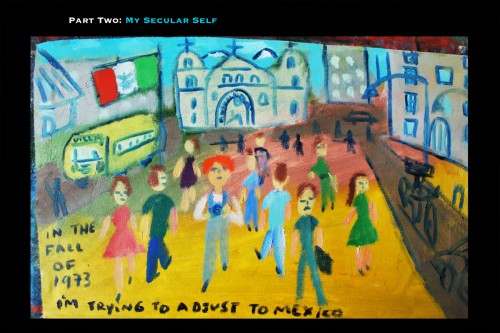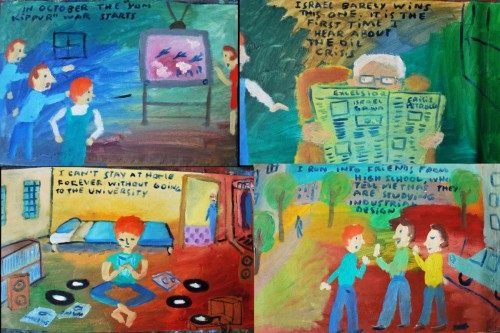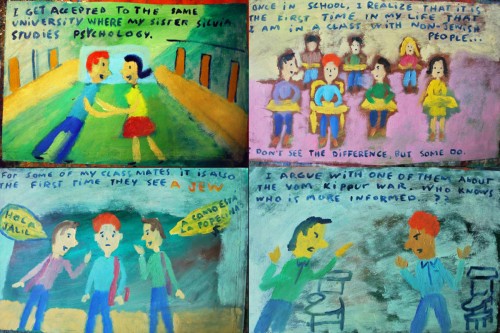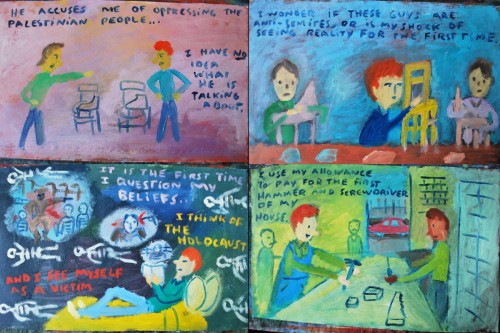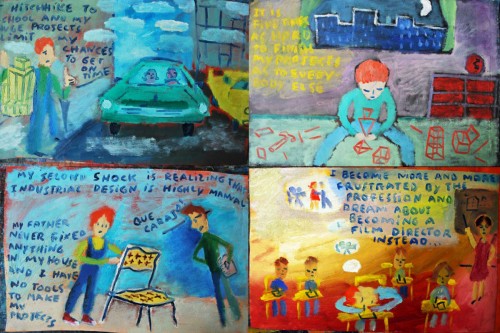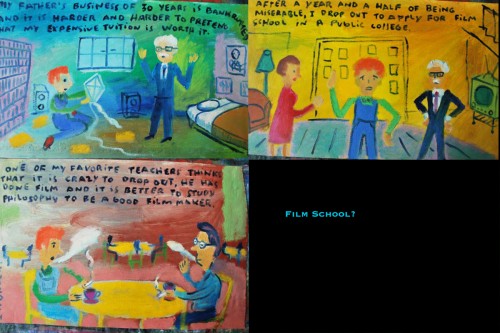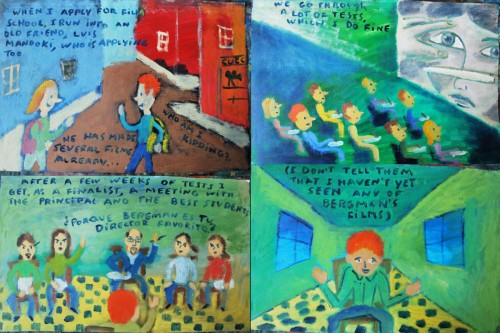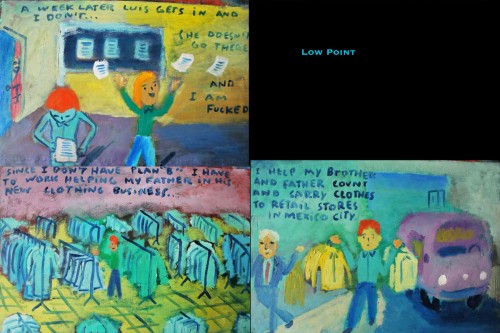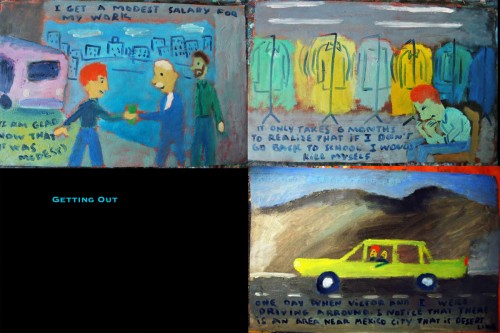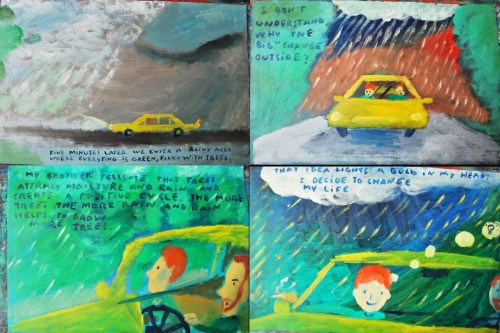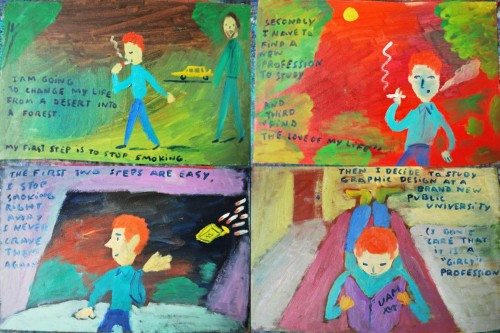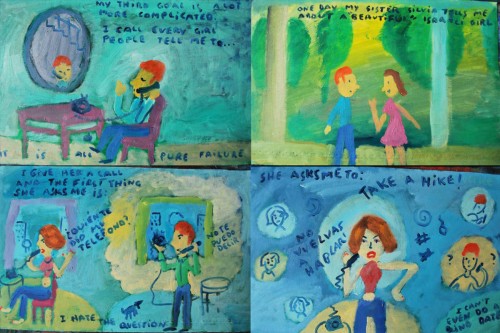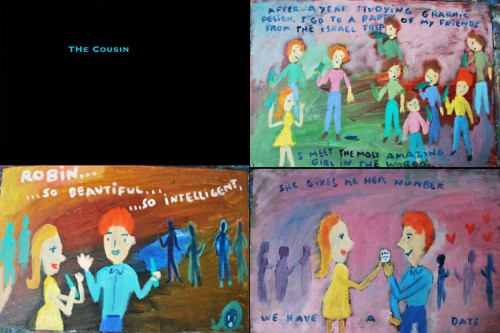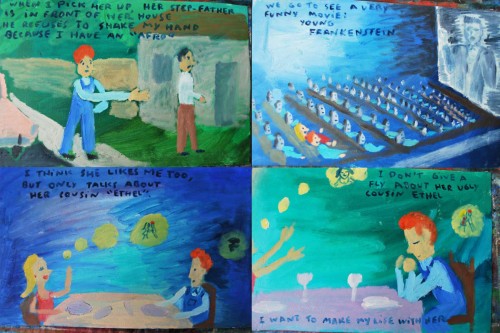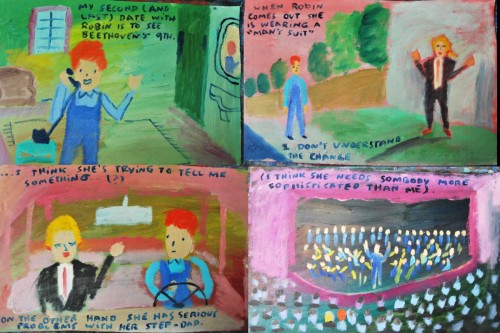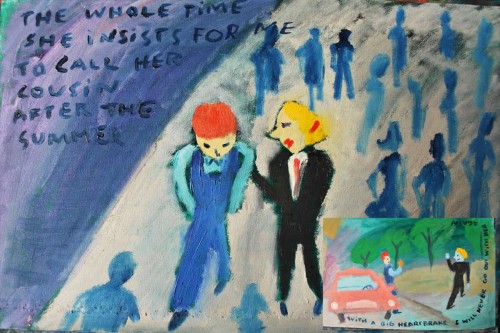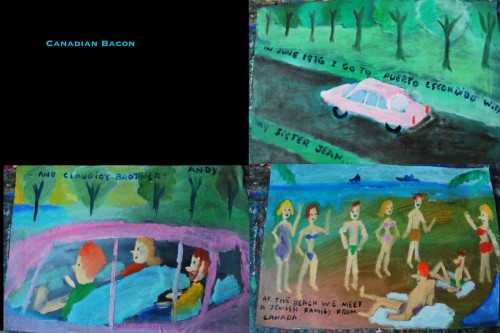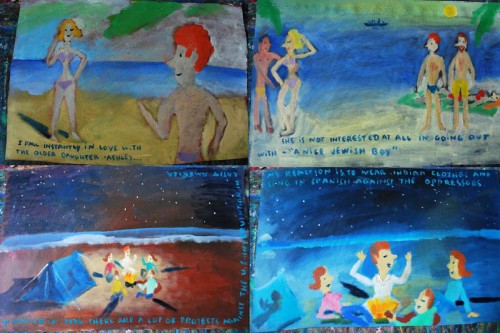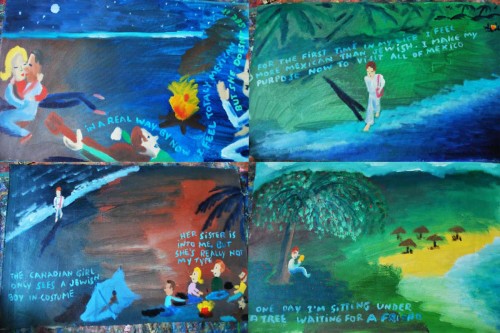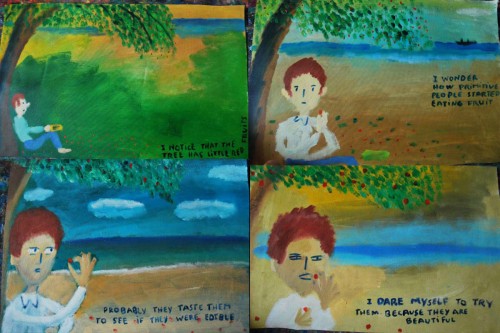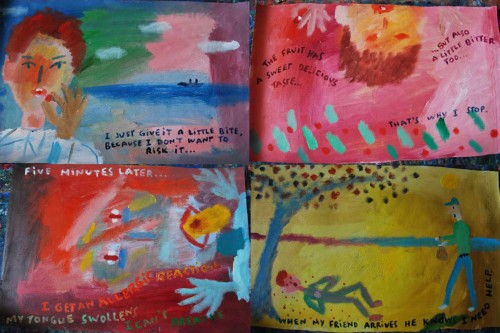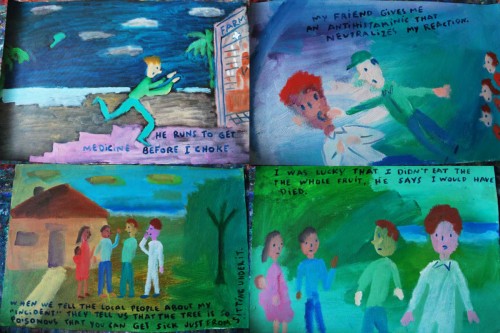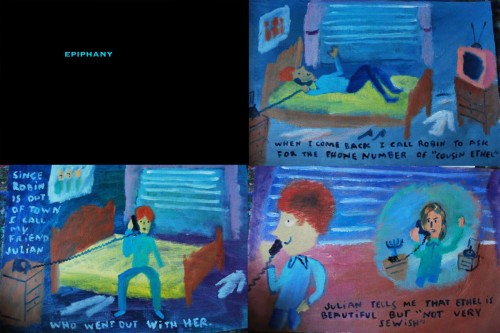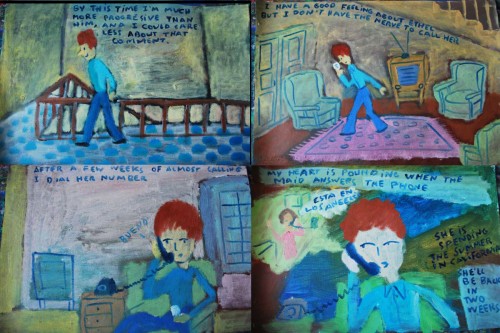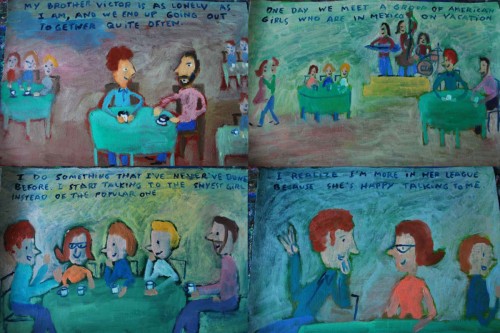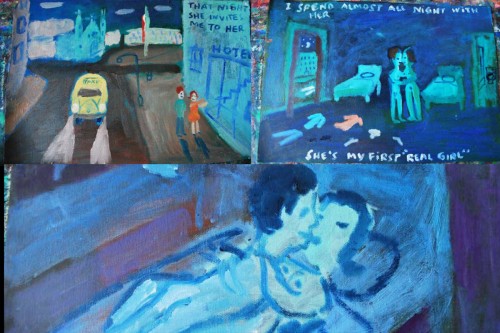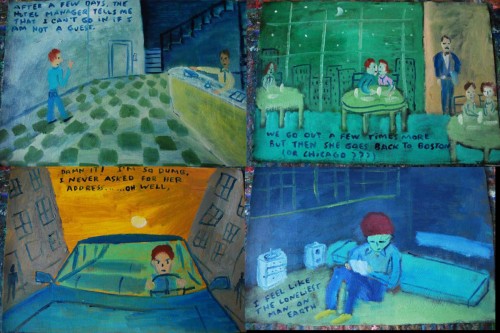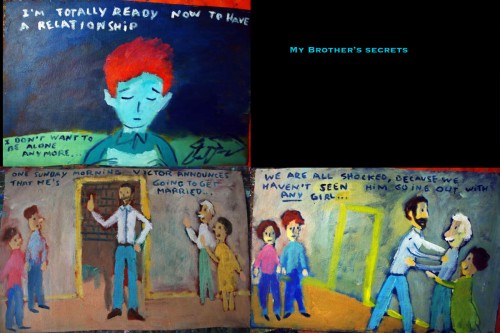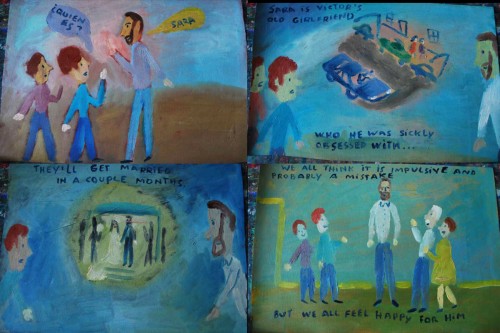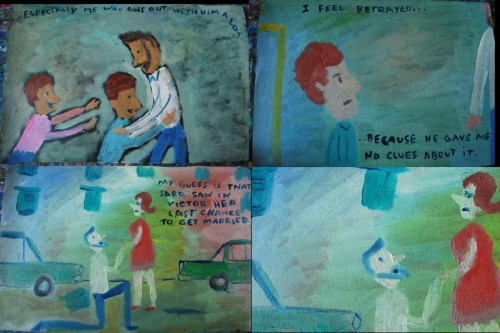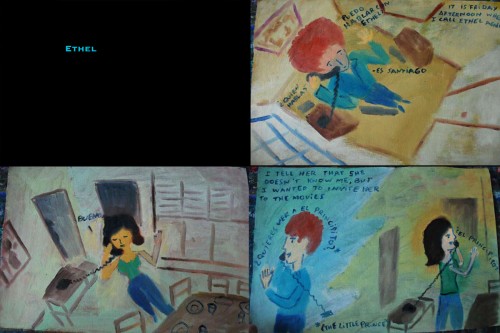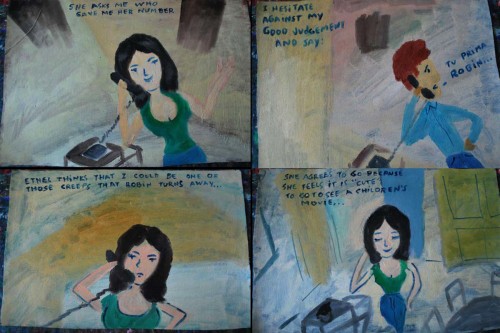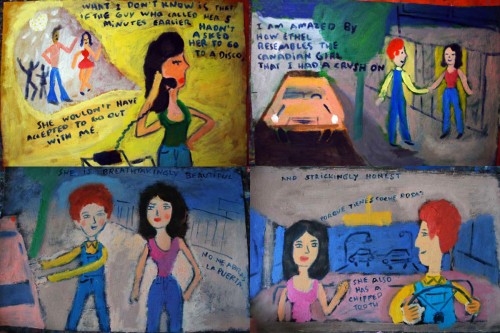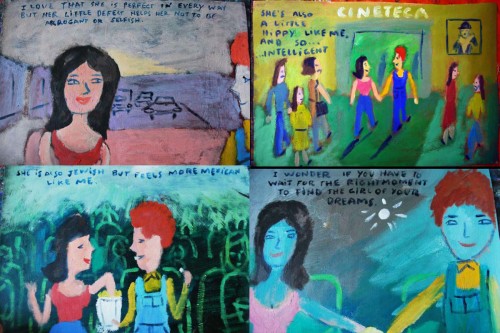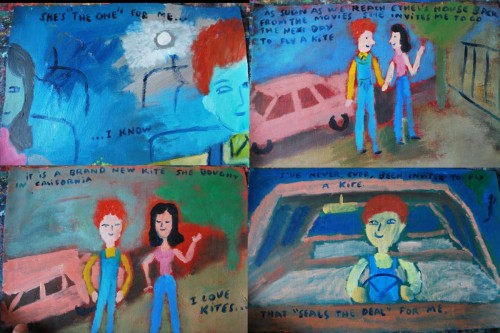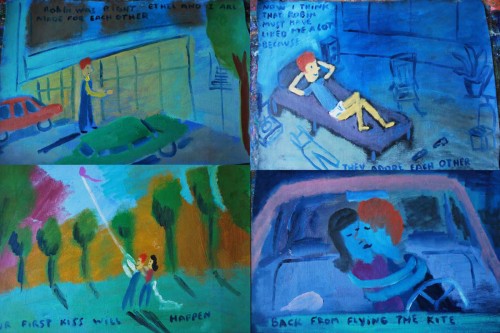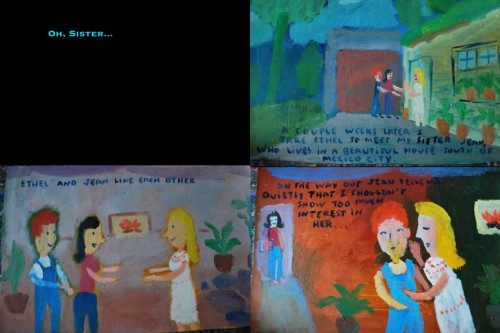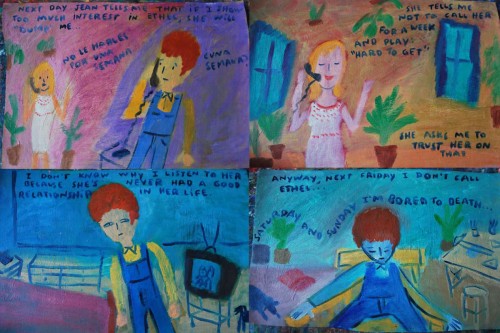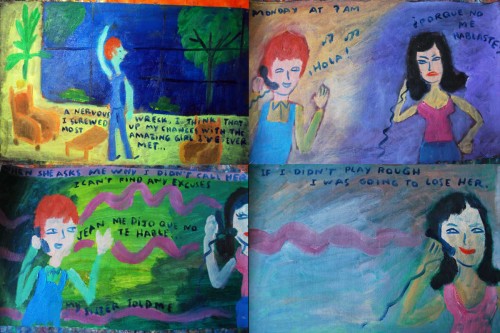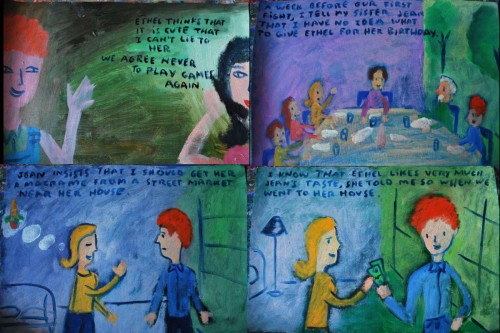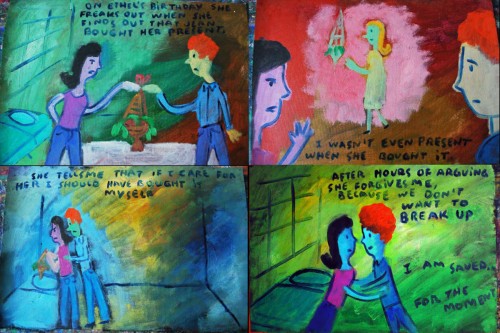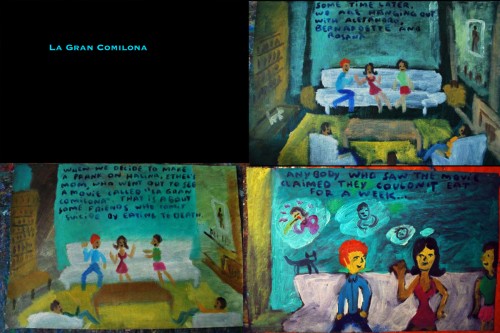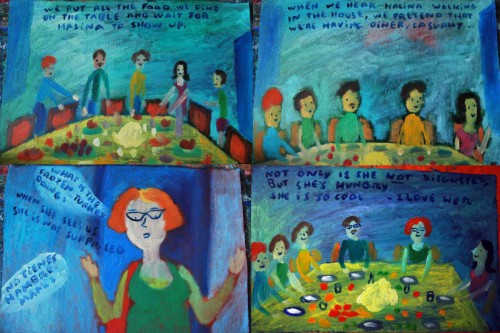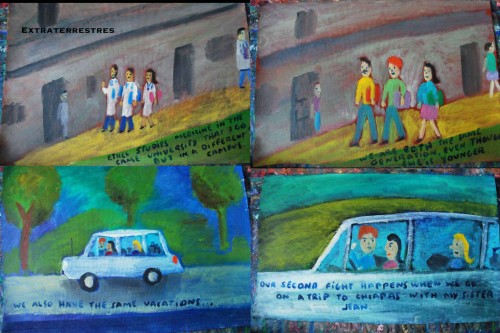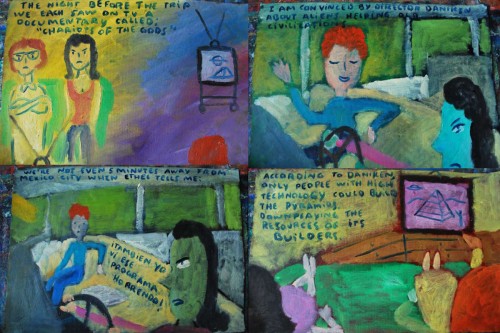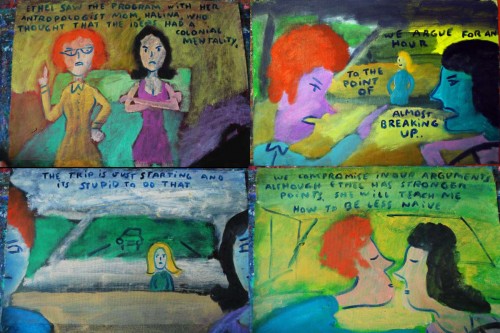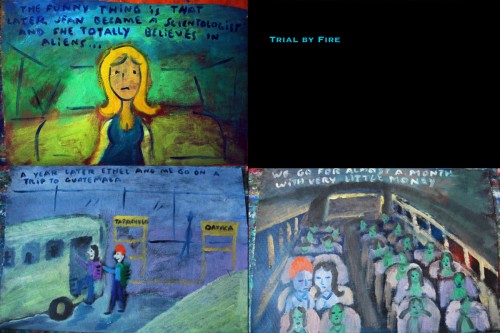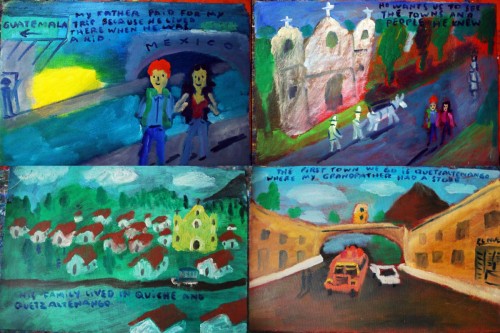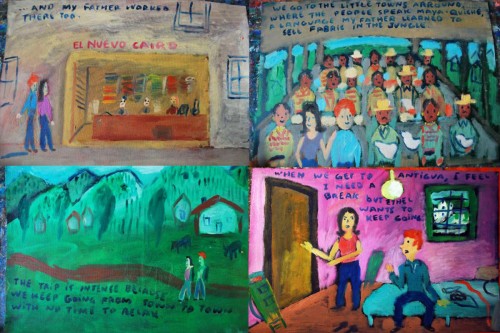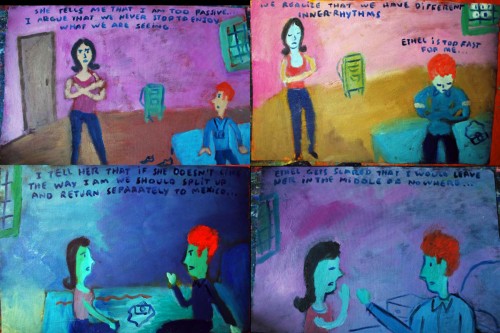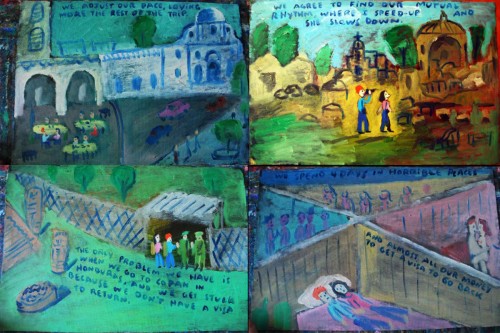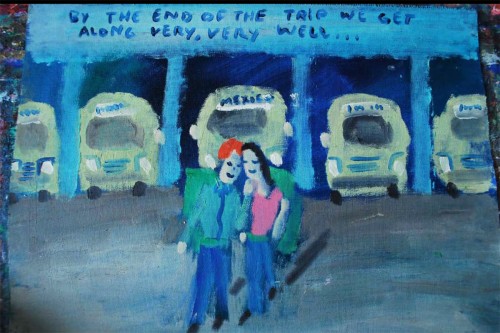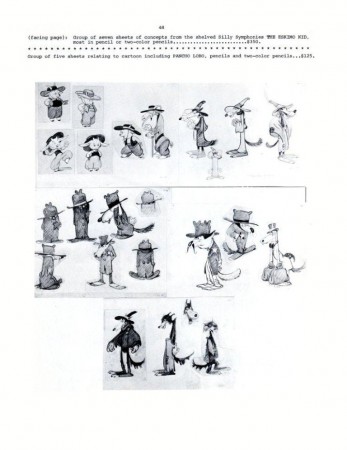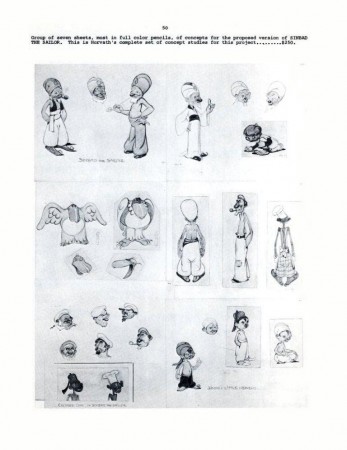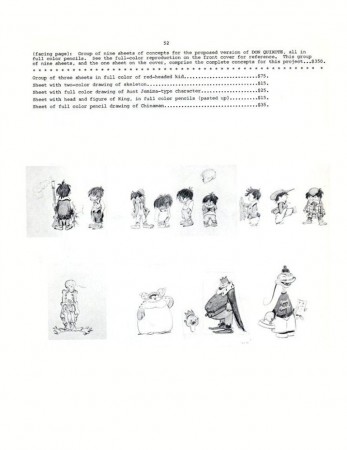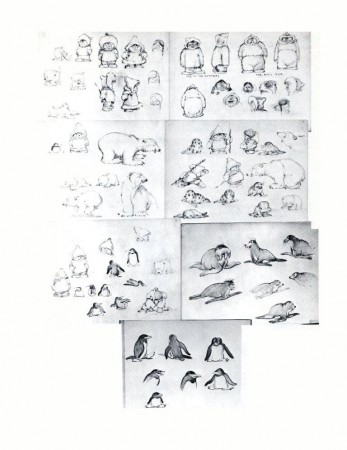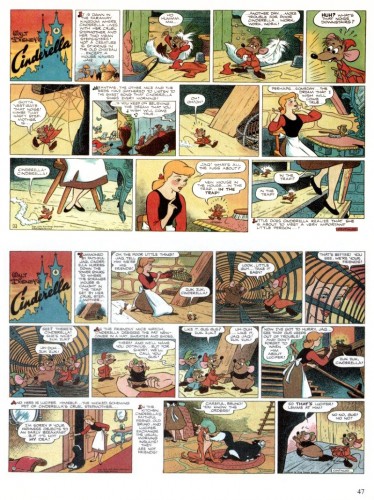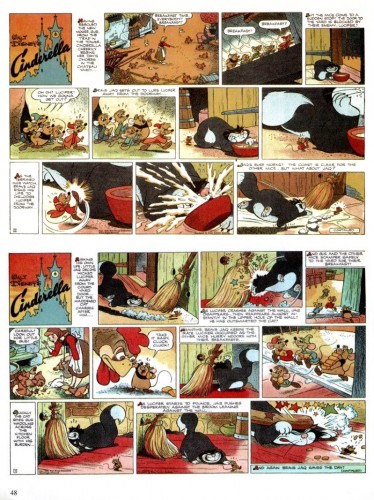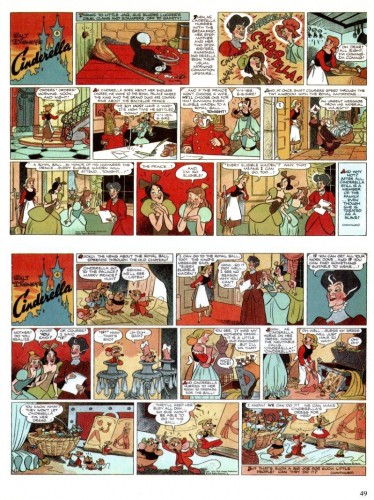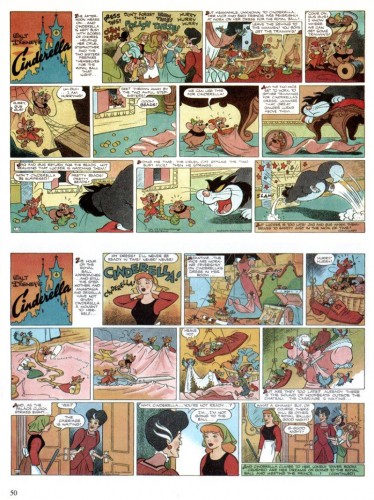Category ArchiveBooks
Animation Artifacts &Bill Peckmann &Books &Disney &Illustration 03 Dec 2010 09:53 am
He Drew As He Pleased – 4
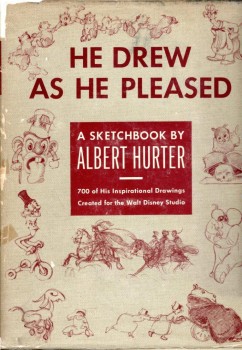 - Here are more pages from the book by Albert Hurter, He Drew As He Pleased (Simon and Schuster, 1948.) This gem is a rare book, indeed.
- Here are more pages from the book by Albert Hurter, He Drew As He Pleased (Simon and Schuster, 1948.) This gem is a rare book, indeed.
Albert Hurter was one of the European illustrators Disney brought into his studio for Snow White and Pinocchio. Hurter was the his own master, drawing designs which would be used generally to further the design of the features and Silly Symphonies.
A similar position seems to have gone to Joe Grant when he worked in the period during the making of Beauty and the Beast through The Hunchback of Notre Dame. Some of his drawings, as can be seen in John Canemaker‘s book, Two Guys Named Joe, are just as brilliant. Indeed, there were a lot of brilliant artists floating around the Disney studio in the late Thirties, early Forties.
Many thanks to Bill Peckmann for the loan of the book’s pages and the arduous task of scanning these illustrations.
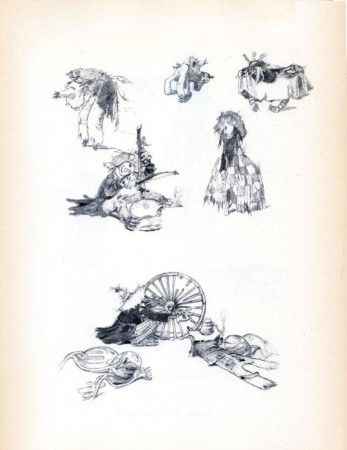 50
50
“He was fond of scarecrows . . . ”
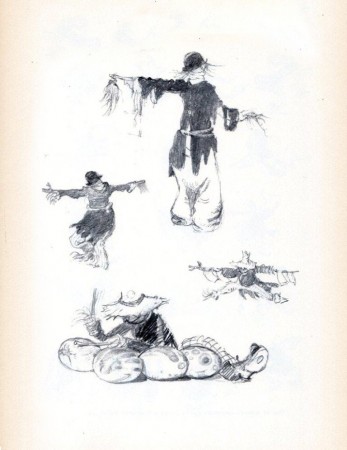 51
51“They were so simple and natural . . .”
.
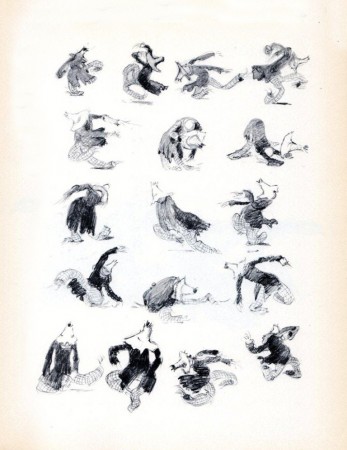 52
52“One of Albert’s ambitions was
to design a scarecrow ballet.”
.
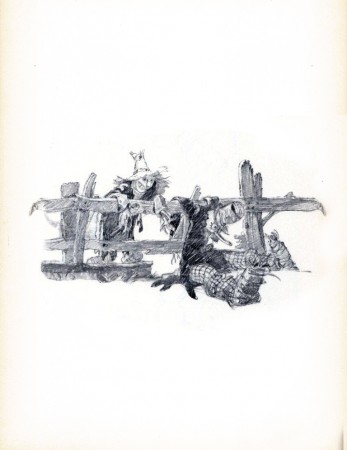 53
53.
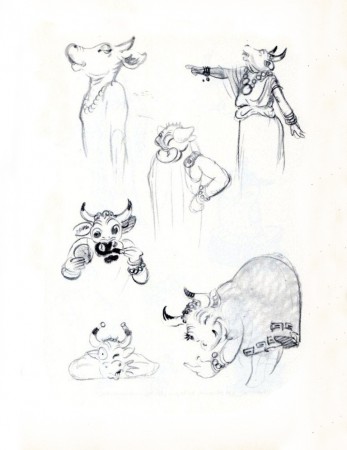 54
54“When Fantasia was planned,
he began playing with mythology.”
.
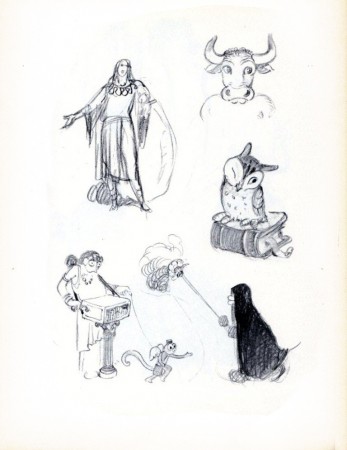 55
55.
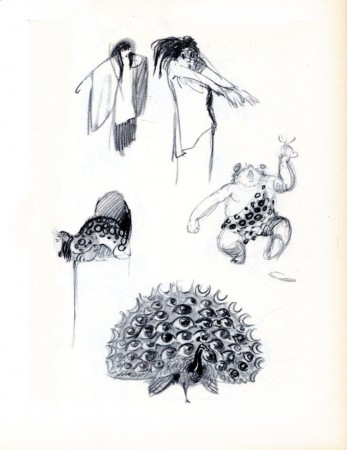 56
56.
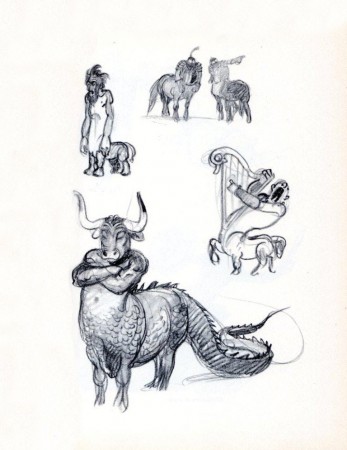 57
57Variations on a Centaur
.
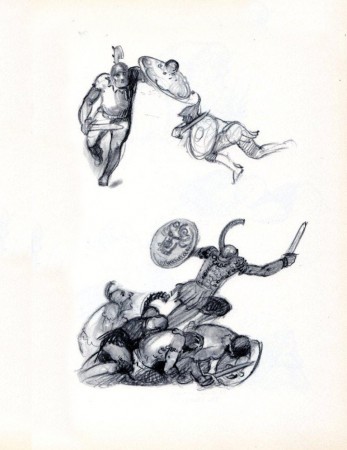 58
58Gladiators at Work
.
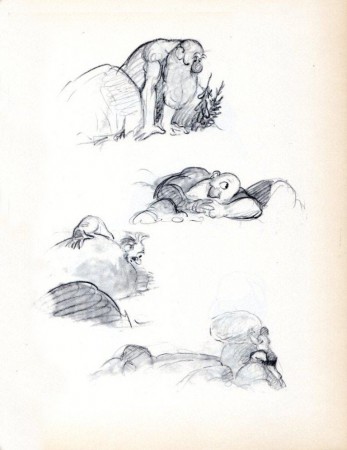 59
59The Titans
.
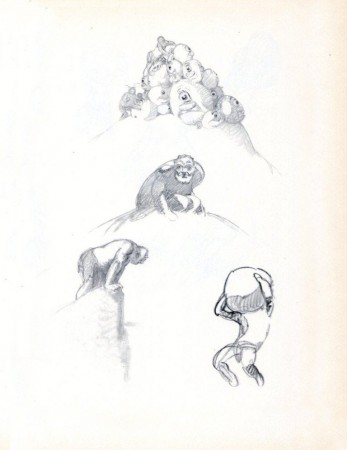 60
60.
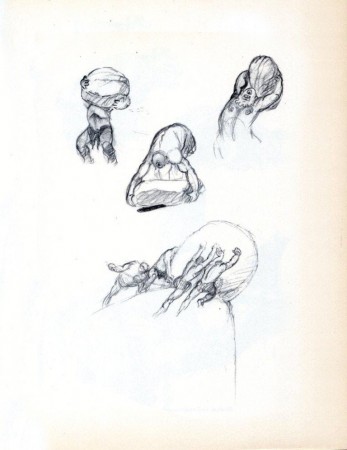 61
61.
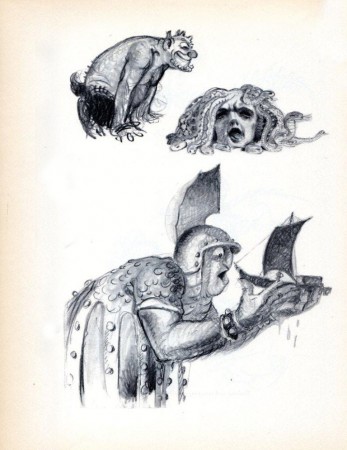 62
62Medusa and Contemporaries
.
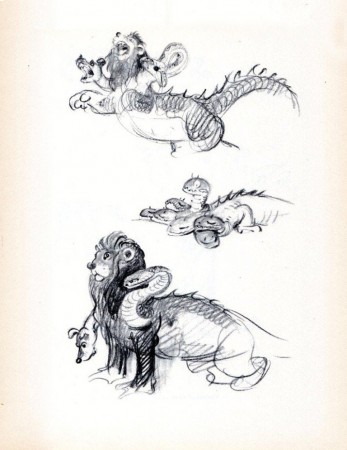 63
63.
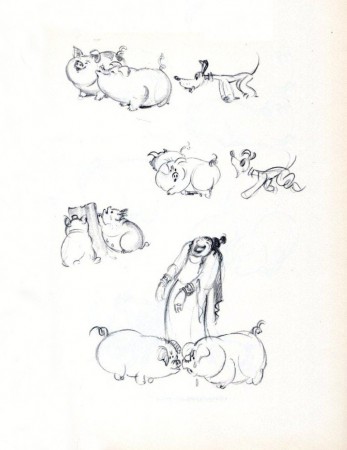 64
64Victims of Circe
.
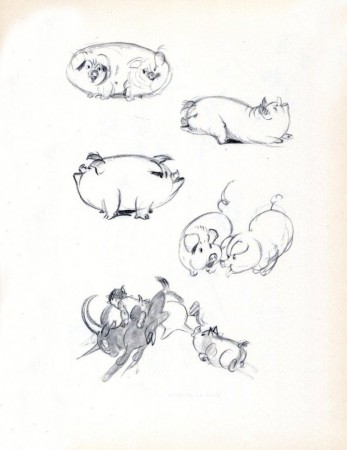 65
65Siamese and Otherwise
.
Books &Illustration 26 Nov 2010 08:41 am
How To Dragon – Book
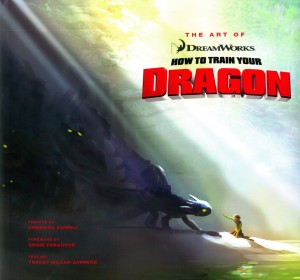 – A couple of weeks ago, I went to a cocktail party of How To Train Your Dragon. I got to meet the Directors, Chris Sanders and Dean DeBlois, the Producer, Bonnie Arnold, and even Mr. Dreamworks, Jeff Katzenberg. There was a good assortment of the NY anmation community present, and the “wine and hors d’oeurves” was superb. It took place at the 21 Club.
– A couple of weeks ago, I went to a cocktail party of How To Train Your Dragon. I got to meet the Directors, Chris Sanders and Dean DeBlois, the Producer, Bonnie Arnold, and even Mr. Dreamworks, Jeff Katzenberg. There was a good assortment of the NY anmation community present, and the “wine and hors d’oeurves” was superb. It took place at the 21 Club.
Then, when leaving the event came the best part. There was a goody-bag that contained the DVD, a bunch of picture postcards and a copy of the book, The Art of Dreamworks How To Train Your Dragon, by Tracey Miller-Zarneke.
This book is a beauty and I’ve wanted to review it since receiving it at that party.
There you’ll find artwork of all stripes leading from the roughest pencil sketch to final images from the film. Here, for example, are a couple of model sheets of the lead character and a sample of what he finally looks like.
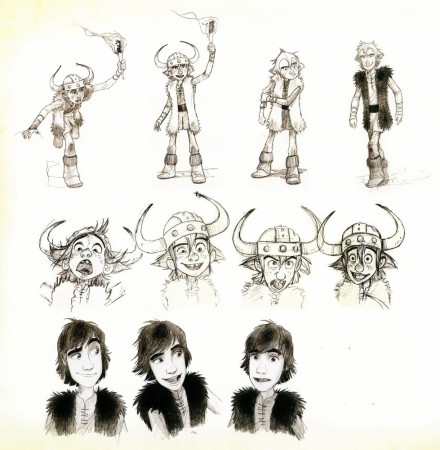 1
1
.
The book is broken into a number of chapters which are a bit peculiar, but it’s meant to lead somewhere in the end, and it does. There are an assortment of dragons displayed, there are the Vikings and the landscapes. The most interesting chapter to me, and probably most animation people, there are the samples of artwork which lead up to the final cgi work. The models, drawings and final digital artwork is all telling and seems a natural development from earlier work.
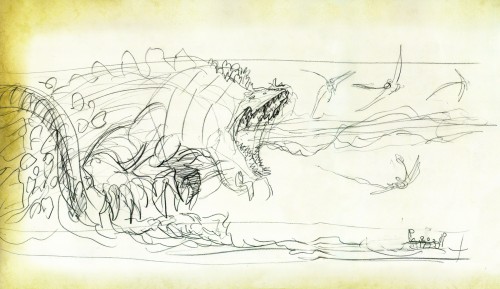 3
3As I said, the artwork goes from the roughest sketch . . .
.
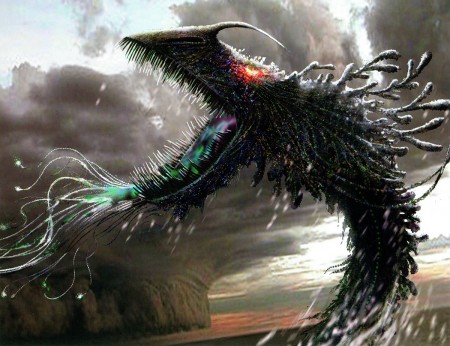 4
4. . . to the finished digital painting.
.
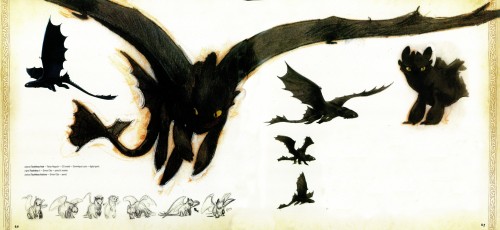 5
5There are many beautiful and original sketches of dragons.
.
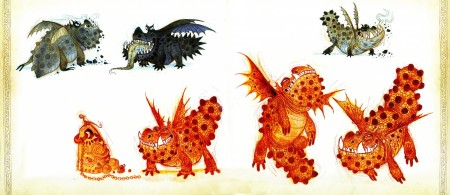 6
6Dragons of all types.
.
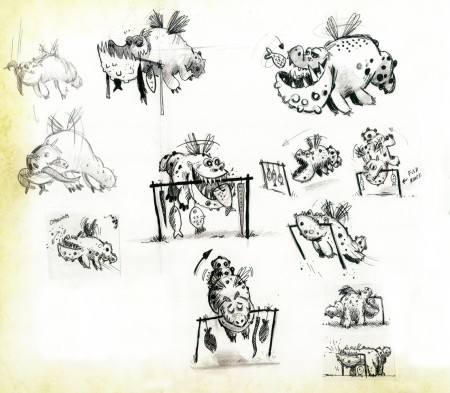 7
7.
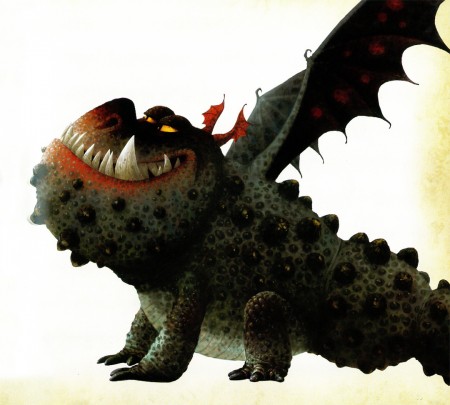 8
8.
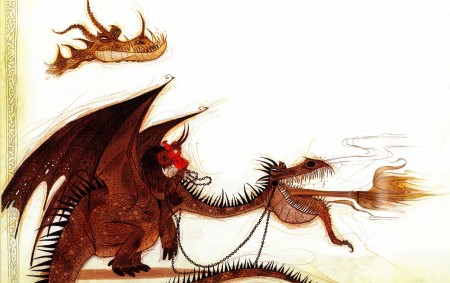 9
9.
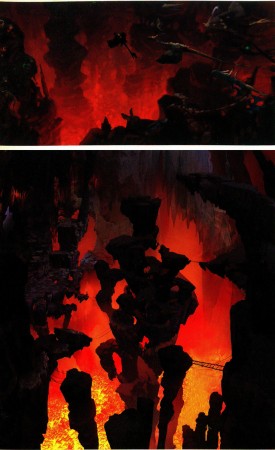 10
10The abstraction turns into a reality . . .
.
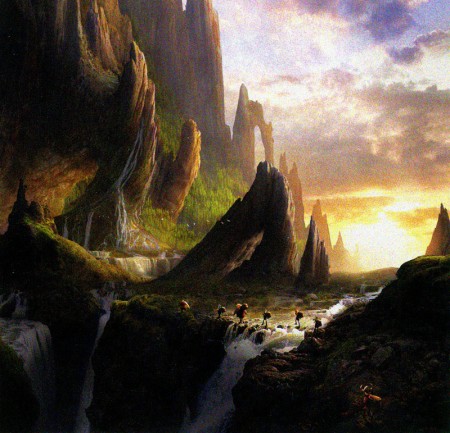 11
11. . . the most realistic of Fantasy Illustration.
.
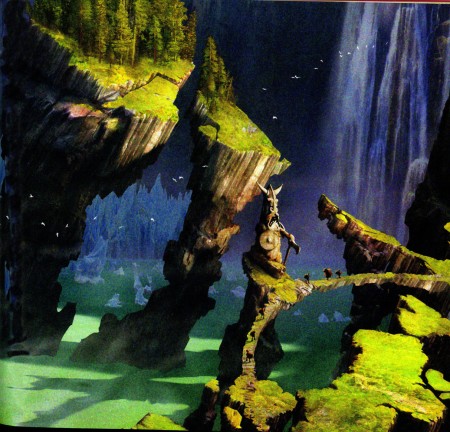 12
12.
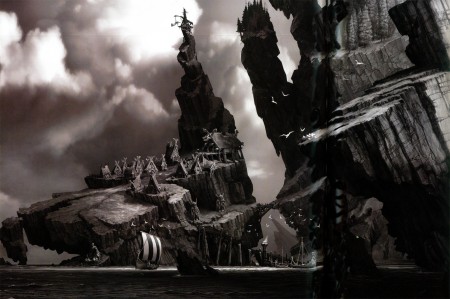 13
13Quite an impressive assortment of sketches.
Here’s a sample of a storyboard done which looks as though it were done by Chris Sanders. However, it’s actually by Alessandro Carloni.
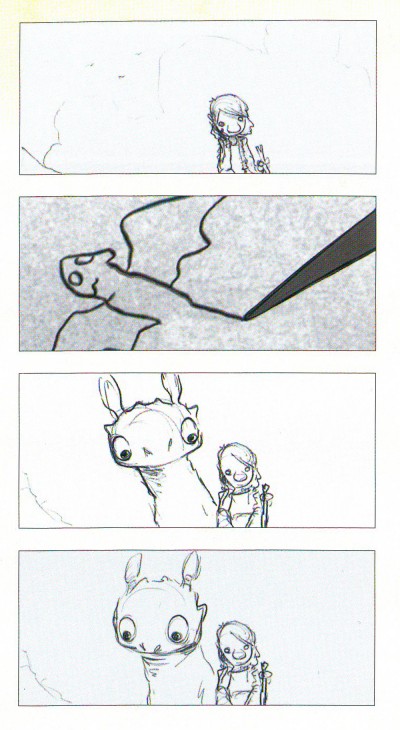 a
a
I’ve haven’t, as yet, written about this film, but I intend to do so tomorrow. I’m impressed with this book. You can see how they got to the film on the screen.
Illustrations:
1: Simon Otto, pencil
2: Gabe Hordos, pencil
3: Ricardo Delgado, character design, pencil
4. Nico Marlett, design, pencil / Zhaoping Wei, digital paint
5: Takao Naguchi, cg model / Dominique Louis, digital paint
Simon Otto, pencil & marker
6: Nico Marlet, pencil & marker
7: Morgan Kelly , pencil
8: Nico Marlet, design / Zhaoping Wei, digital paint
9: Nico Marlet, pencil & marker
10a: Zhaoping Wei, digital paint
10b: Pierre Olivier Vincent, digital paint
11: Pierre Olivier Vincent, digital paint
12: Pierre Olivier Vincent, digital paint
13: Pierre Olivier Vincent, digital paint
14: storyboard seq 2475 -Alessandro Carloni, digital paint
Bill Peckmann &Books &Comic Art 12 Nov 2010 09:36 am
George Baker’s Sad Sack
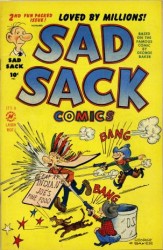 - George Baker‘s comic strip The Sad Sack appeared regularly in the Wartime publication, Yank, The Army Weekly. I grew up reading the comic book version of this strip, many years after WWII, and I had no idea, as a kid, that the comic had such a history. I only knew that I thought it was funny and well drawn.
- George Baker‘s comic strip The Sad Sack appeared regularly in the Wartime publication, Yank, The Army Weekly. I grew up reading the comic book version of this strip, many years after WWII, and I had no idea, as a kid, that the comic had such a history. I only knew that I thought it was funny and well drawn.
The strip started in Yank, and, after the war, was syndicated by The Bell Syndicate. The strip was ultimately sold to Harvey Comics in 1957, and they produced the comic books.
This collection of strips, here, in book form, shows us the evolution of the character and we can see his growth. It’s a collector’s item of a book and another gem contributed here by the inestimable Bill Peckmann from his library. Many thanks to him for the loan and the scans.
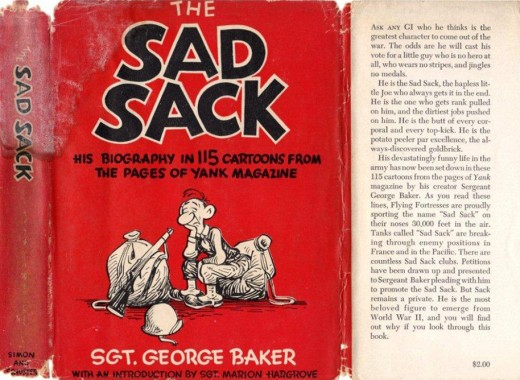
The front cover of the book
Animation Artifacts &Bill Peckmann &Books &Disney &Illustration 05 Nov 2010 07:23 am
He Drew As He Pleased – 3
 - Here’s another follow up to the Albert Hurter book, He Drew As He Pleased (Simon and Schuster, 1948.)
- Here’s another follow up to the Albert Hurter book, He Drew As He Pleased (Simon and Schuster, 1948.)
Hurter, of course, was one of those exceptional European illustrators Disney brought into his studio in preparation for Snow White and Pinocchio. Hurter, as the title implies, was the master of his own fate, drawing designs which would be used generally to further the design of the features and Silly Symphonies.
Many thanks to Bill Peckmann for the loan of the book’s pages and the arduous task of scanning these illustrations.
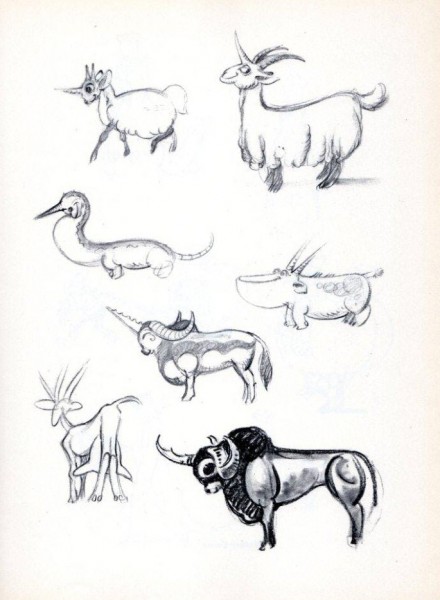 35
35
Albert’s animals had a tendency to face Westward.
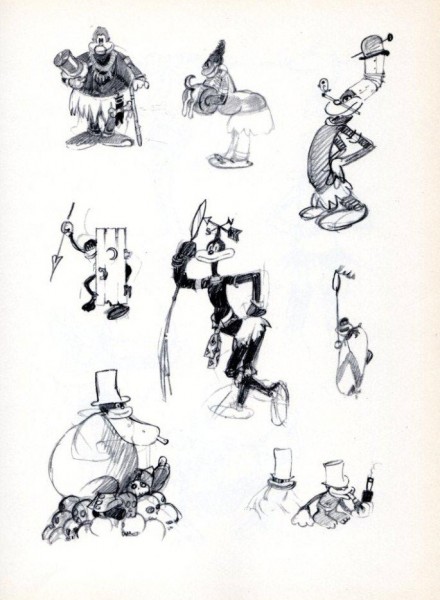 37
37
Studies for “Trader Mickey”.
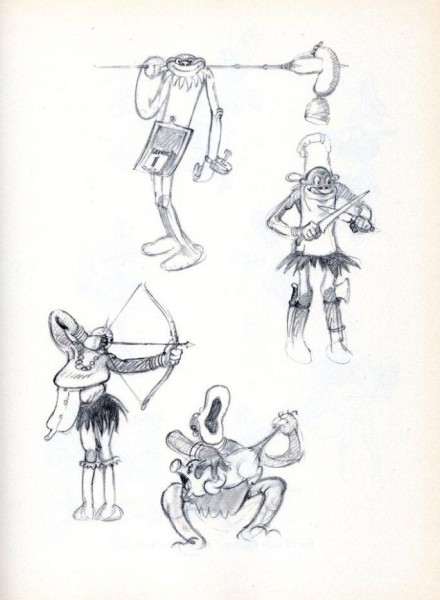 38
38
More studies for “Trader Mickey”.
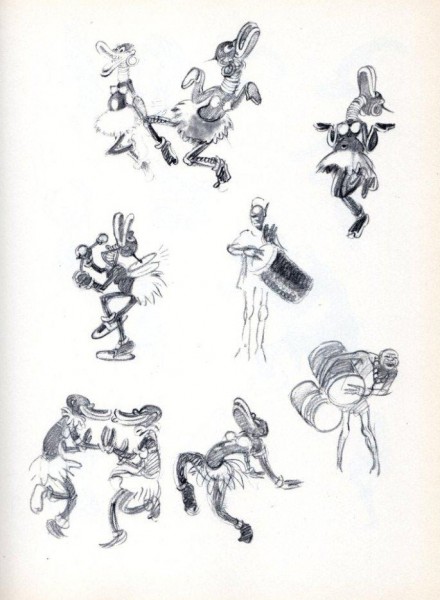 39
39
For “Jungle Rhythms” a Silly Symphony.
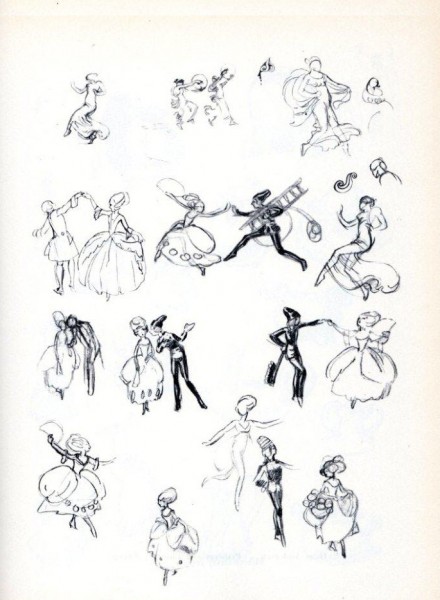 42
42
Hans Christian Andersen’s “Princess and the Chimney Sweep”.
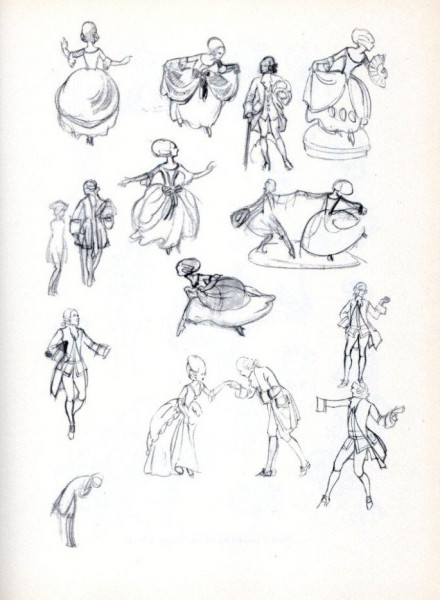 47
47
Minuet In Porcelain for the Clock Shop.
To see the other posts from this book: Part 1, Part 2
Books &Independent Animation 02 Nov 2010 07:25 am
Just Published
The NYTimes features a longish article about Sylvain Chomet’s film, The Illusionist. It appeared in Sunday’s paper.
Likewise, the NYTimes also has an article about Megamind. It’s essentially a photo essay.
- George Griffin sent me a couple of links: one to an article at ArtForum Magazine about the scupture of animation artist Robert Breer; it’s a good read. Take a look here.
There’s also a spot called “Dot” from Aardman Animation that’s worth viewing at YouTube. Here It reveals what went in to making the world’s smallest character animated film and how it was shot using a Nokia N8.
Book Review
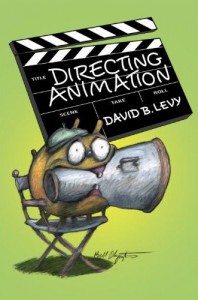 - David Levy has fashioned an exceptional career for himself. He’s been producing animated shorts, teaching at the School of Visual Arts, and writing books. It’s the latter career choice that I’m interested in, today. Dave’s got a new book hitting the market today, and I’d like to talk about it.
- David Levy has fashioned an exceptional career for himself. He’s been producing animated shorts, teaching at the School of Visual Arts, and writing books. It’s the latter career choice that I’m interested in, today. Dave’s got a new book hitting the market today, and I’d like to talk about it.
Directing Animation is published by Allworth Press, and it’s his third book and a good companion to the other two: the first, Your Career in Animation: How to Survive and Thrive and the follow up, Animation Development: From Pitch to Production.
David is concerned with the nuts and bolts of animation. He wants to reveal how things work. In the first book, Your Career in Animation: How to Survive and Thrive, he focussed on how the individual should work in an animation studio. It was something that hadn’t been touched on before: proper manners and activities within a studio environment; essentially, how to work with others. The second book, Animation Development: From Pitch to Production spoke to those were trying to develop a series for television and how to present it to those in the position of power. It perfectly, again, taught the proper protocol for delivering your message and selling yourself. Neither of these books, really, had any predecessor.
This third book, Directing Animation, is also something original. It talks about the person who controls a film. There are many book on live-action directing, none that I know of – except this one – for animation. David spends much of his time talking to professionals and gives a guide to working within a group, a studio structure. He also spends plenty of space talking about the Independent animation Director.
I’m mentioned quite a bit in the book, as is Bill Plympton (who did the cover art for the book.) We’re the old timers, it would seem, and a lot of other younger directors such as David Palmer, Tatia Rosenthal and Ian Jones-Quartey get plenty of coverage. Even Web Directors, such as Xeth Feinberg, are discussed.
I’m sorry there isn’t time spent discussing the history of animation direction with some of the past geniuses who set the way: Chuck Jones, John Hubley, Bob Clampett, Jiri Trnka and the many others with strong personalities. It would be nice to see what made those people strong directors and how we can learn from their films.
The book gives more of an overview than an actual how-to approach to the subject. Unlike a book on how to direct a live-action film, there’s little talk of the language of film; no mention of such things as: “the inadvisability of cutting from LS to CU or back”, “the complications of shooting a pull back – zoom out” or even “crossing the 180°”. No, this book is more about getting the job and what’s expected of you. However, using a lot of anecdotes and answers to questions from the directors chosen, a lot is revealed. The subject takes us from TV series to animated features to web productions. A lot to cover, and it does it gracefully.
The book is a good companion to those questioning the career choice. However, it takes a lot of experience to do it properly. The knowledge of film structure and live action history has a lot to do with properly directing a film – even an animated film. Hitchcock once said that there’s only ONE possible setup for a scene, and you had to find that setup. In animation we usually jump from one hyper dynamic pose to another; it’s not film language but comic book language. A book can only tell you so much; the experience will reveal much more.
I’d say that if you want to direct, you should make a film – by yourself, if necessary. You’ll learn a lot of mistakes to avoid for the future and get your directing career going.
The book’s a great read, as are all of David’s works. I’m looking forward to his upcoming book about Bill Plympton. This is something different for David, and I’m curious to see how he’ll approach it.
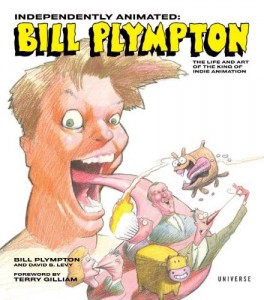
_____________________
Bill Peckmann &Books &Illustration 29 Oct 2010 07:44 am
Will Rogers & Grim
- Here’s a book Bill Peckmann owns. It’s a book by Will Rogers (who was the greatest star of his time) that was illustrated by Grim Natwick and published in 1929.
I’ve decided to leave the text on the stills since you might be interested in reading it (as I was) even though it seems to cover every other double-page spread. I’ve also blown up a couple of the stills so you can get a better look. I love this period stuff.
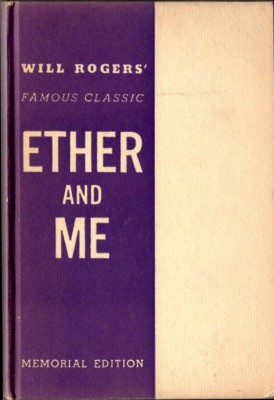
(Click any image to enlarge)
Books &Disney 28 Oct 2010 07:47 am
Reviews-a-Plenty
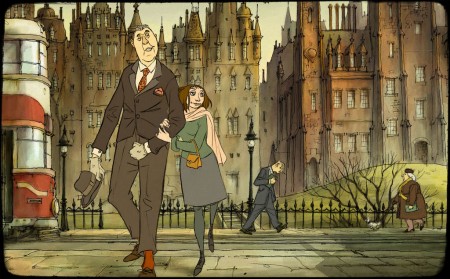
- Mark Mayerson has given an initial review of The Illusionist. I’ve waited a while to see this feature. I’d intended to go to Ottawa, not only to represent my film shown there, but to see this new film from Sylvain Chomet. The first screening I will be able to attend is on Wednesday Nov. 10th.
Richard O’Connor in his short review at his site Asteriskpix.blogspot, left me something to think about, but he didn’t feel it was the best of the features at the Festival. Mark Mayerson certainly did. In the comments section of Mark’s site, Richard extends his review telling me, clearly, that I’ll have to judge for myself.
Mark’s review is answers some of the questions I wondered about. He predominantly focuses in on the story elements and leaves plenty for us to digest. His comparison to not only other animated features but live action, as well, takes this review to a high level, which is where Mark seems to be placing this film and where he always writes from.
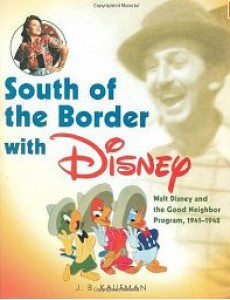 - Michael Barrier has reviewed the two important, relatively-new books: South of the Border with Disney by J.B. Kaufman and Two Guys Named Joe by John Canemaker.
- Michael Barrier has reviewed the two important, relatively-new books: South of the Border with Disney by J.B. Kaufman and Two Guys Named Joe by John Canemaker.
The review is quite long and goes into plenty more about Disney and his employees, covering all the times that Joe Grant would have been working there. Barrier talks more about Grant than about the book’s other half, Joe Ranft. This gives a wider view of the studio. Since Barrier has less interest (admittedly this goes for me as well) in Ranft, he’s give short shrift in this review.
There’s quite a bit about the anti-Semitic remarks Disney and others made and faced at the studio. There’s plenty about the importance (or non-importance) of those travelling with Walt for any length of time. And, most importantly, there’s an analysis of others with equal position to Grant in making the films at the studio – particularly as to how the person was moved by Disney into other branches of work as the studio transitioned into live action and television.
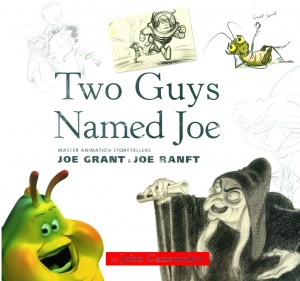 Finally, Mike’s take is that all-things-Disney is starting to get tiresome. He questions whether the two books would have been written differently if they weren’t published by Disney. This was a question I’d asked as well, though I didn’t have the courage to add it to my reviews.
Finally, Mike’s take is that all-things-Disney is starting to get tiresome. He questions whether the two books would have been written differently if they weren’t published by Disney. This was a question I’d asked as well, though I didn’t have the courage to add it to my reviews.
It’s another excellent commentary article by Mike and is a must read for anyone interested in animation. As with some of his other recent reviews, I more taken with some of the side notes – slight tangents Barrier takes – than with that which is directly addressing off the book. The article doesn’t flinch in calling the shots against the authors, although I know that Mike is very sensitive, expecially in this piece, in not wanting to hurt either of the two authors.
 - This pushes me into doing my job of reporting on two books I’ve meant to cover for some time. Ken Priebe‘s excellent The Advanced Art of Stop-Motion Animation is a follow-up to his first book, The Art of Stop-Motion Animation.
- This pushes me into doing my job of reporting on two books I’ve meant to cover for some time. Ken Priebe‘s excellent The Advanced Art of Stop-Motion Animation is a follow-up to his first book, The Art of Stop-Motion Animation.
The first book was a primer about the art of that medium. Ken covered it thoroughly and gracefully. He not only revealed many of the secrest of the process, but he gave plenty of examples of other stop=motion animation which elucidated on the art.
The second book is much more involved with many of the films out there. There’s a good history of the medium in this book, and I was not disappointed to find some of the rare pieces from the early days. Just look into the films of Starewicz (Americanized as “Starewich”, here), and you’ll read plenty that you might not know. The same goes for A. Ptushko and G. Pal. There’s also plenty said about newer stop-motion. Caroline, The Fantastic Mr. Fox and The Corpse Bride are well covered.
The illustrations are plentiful and large, and the book comes with a DVD so that you can view some of the exercises in the book.
Ken Priebe loves the medium of stop-motion. He often advises me of some rare piece he’s found and put up on YouTube. These are often gems in good quality. He brings that same love of this often-neglected branch of animation to the book at hand. If you, too, have any love of the form, get this book.
It’s a paperback published by Course Technology PTR
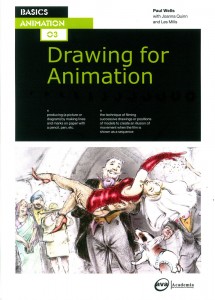 The second book I’d like to present to you is Drawing for Animation by Paul Wells with substantial help from Joanna Quinn and Les Mills.
The second book I’d like to present to you is Drawing for Animation by Paul Wells with substantial help from Joanna Quinn and Les Mills.
Need I say more than Joanna Quinn to get you interested in this book? Her films are brilliantly drawn works of art, as if Daumier had come to life. The drawing in this book is outstanding as well, and we’re treated to a plentiful look at her art – from storyboards to animation drawings to final setups. My only complaint is that the images are small. One wishes it were on line so you could click the thumbnails and enlarge. Alas, it’s a book, and we have to settle for the thumbnails (or scan and enlarge them ourselves as I did at the end of this review.)
The use of drawing is detailed and instructed through many many examples and it’s all worth studying. Paul Wells’ writing is clear and concise, and he well uses examples to illustrate his thoughts. This book is a little gem and I recommend it highly for any animation (especially 2D animation) lover.
The book is a paperback published by Ava|Academia.
Here are a couple of the other illustrations in the book which you can enlarge by clicking:
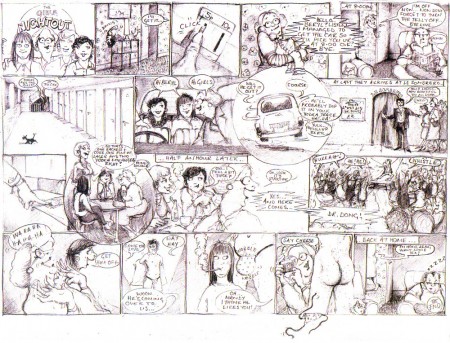
A comic book version of a storyboard
for the film A Girl’s Night Out.
An unorthodox method that energized the film.
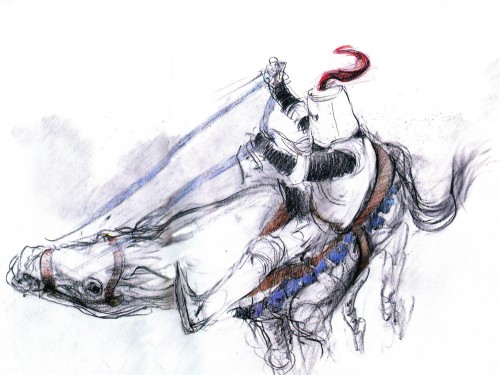
A study for The Knight Riding Horse 0f Wife Of Bath
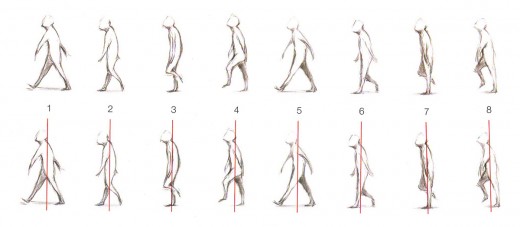
A walk cycle which I put through a QT movie (on threes) below.
Books &Comic Art &Illustration 25 Oct 2010 07:14 am
“Ex Vida†from Santiago Cohen – 3
- Continuing with the epic autobiographical story of Santiago Cohen, this is part 3 of a 1000 picture project. The piece is, to me, a pure work of art. A strong, tightly knit story with images which are almost incandescent in their glowing color. I encourage you to look carefully by enlarging the frames and reading what Santiago has written.
To see prior parts of this post:
Part 1
Part 2
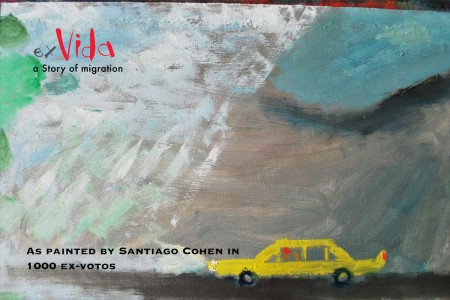 1
1(Click any image to enlarge.)
Animation &Bill Peckmann &Books &Disney &Models 15 Oct 2010 07:27 am
Hovarth – 4
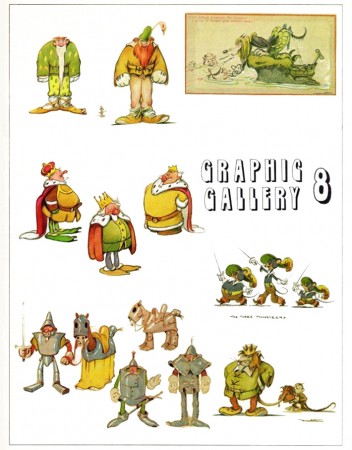 - Here is the final post of the Ferdinand Horvath catalogue of drawings. From 1934-1937, Horvath worked at the Disney Studios painting backgrounds, creating layouts, constructing three dimensional models, and designing characters and gags for over fifty Silly Symphonies and Mickey Mouse shorts.
- Here is the final post of the Ferdinand Horvath catalogue of drawings. From 1934-1937, Horvath worked at the Disney Studios painting backgrounds, creating layouts, constructing three dimensional models, and designing characters and gags for over fifty Silly Symphonies and Mickey Mouse shorts.
He was one of those European illustrators, including Albert Hurter or Gustaf Tenggren and himself that Disney found in Europe and brought to America to inspire his staff artists.
Horvath also worked at Paul Terry’s studio on the “Aesop’s Fables” series. Leaving Disney, he designed models and layouts for Columbia/Screen Gems’ shorts. In 1940, he sculpted puppets for George Pal’s Puppetoons.
He was a versatile artist whose work was an inspiration for many Disney artists. The following booklet was published by Graphis Gallery and put together by Bruce Hamilton. The opening material explains itself.
Bill Peckmann sent me the pages of this booklet, and I thank him for keeping Horvath alive.
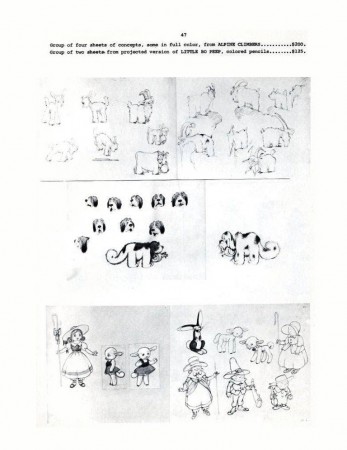 48
48(Click any image to enlarge.)
Bill Peckmann &Books &Comic Art &Disney 14 Oct 2010 07:14 am
Cinderella strip
- Bill Peckmann sent me the following strips from a rare book he has of Animated Features and Silly Symphony Comics. The copyright date is 1950. CinderellaSunday strips feature artwork by Manuel Gonzales, penciler and Dick Moores, inker. Moores, of course, took over the Gasoline Alley strip from Frank King. (These Gasoline Alley strips are so beautiful, I’ve posted some of them. I have a book somewhere, if I can find it I will put up more of them.)
Thanks to Bill Peckmann, for the Cinderella strips. Here are the first half of these strips. More will follow soon to conclude the story.
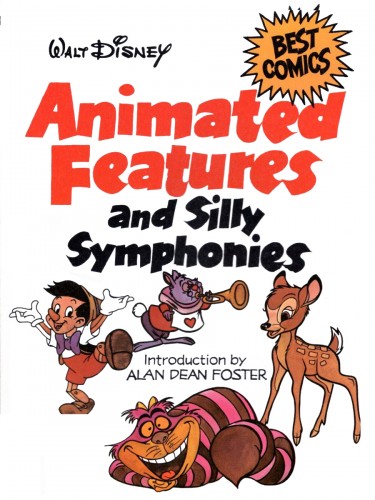
(Click any image to enlarge.)
